Top 10 World's Most Expensive Photographs of All Time
 Top 10 Most Expensive Lighters in the World Top 10 Most Expensive Lighters in the World |
 Top 10 Most Expensive Guitars Ever Sold In The World Top 10 Most Expensive Guitars Ever Sold In The World |
Even while photographs created by photographers working in a wide variety of photographic subgenres have been successfully auctioned off, the term "fine art" photography is going to be used whenever we discuss the sale of the most expensive photograph ever.
The market for fine art photography can be peculiar and unpredictable, and its state can shift very quickly. Some photographs sell for prices that most people would regard to be respectable, but others skyrocket to levels that most photographers can only only hope to achieve in their wildest fantasies.
These are 10 most expensive photographs ever sold.
What are the most expensive photographs in the world in history?
10. Cindy Sherman, Untitled Film Still
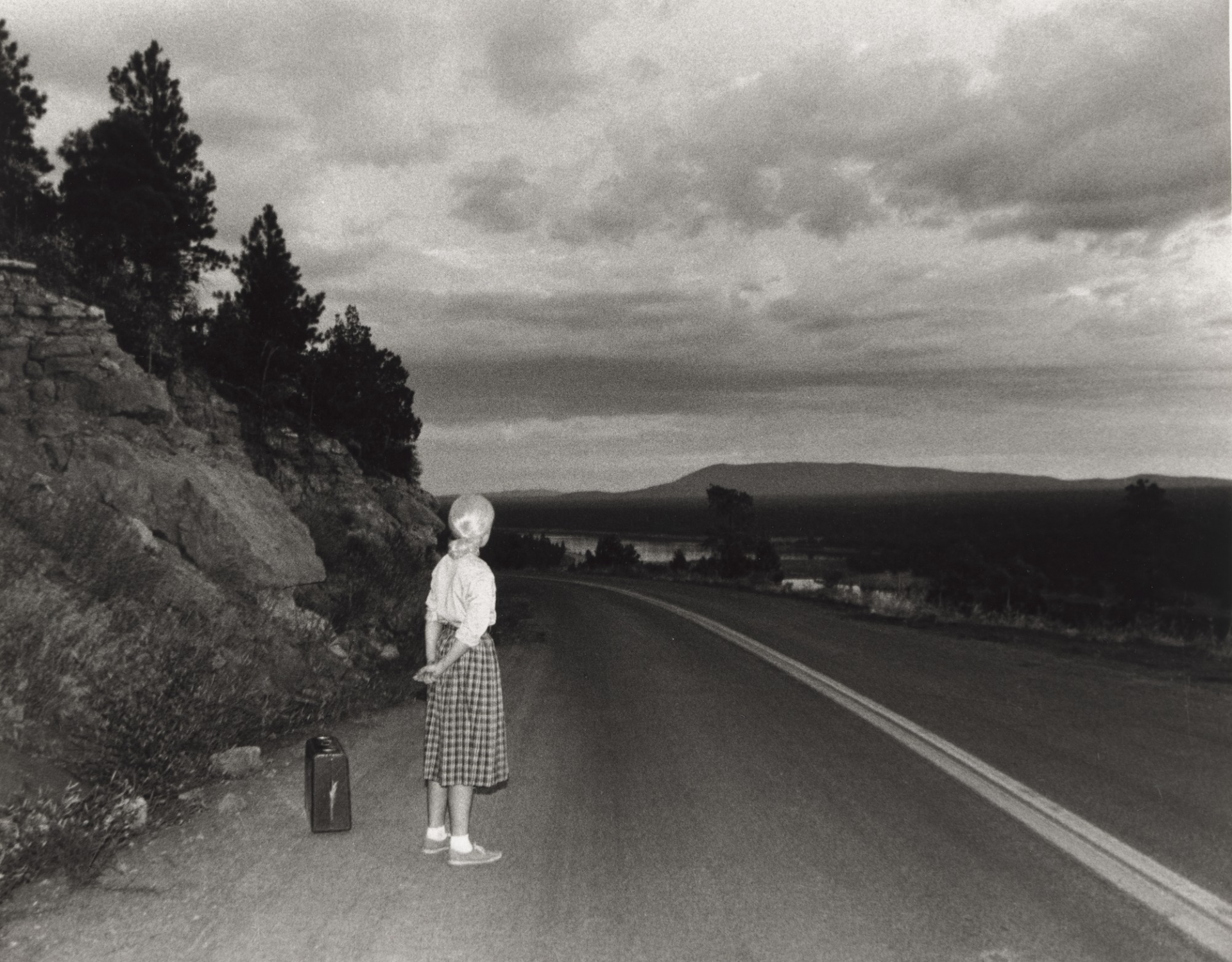 |
| Cindy Sherman, Untitled Film Still - Photo: Tate |
The sixty-nine black-and-white images in the collection Untitled Film Stills were taken between 1977 and 1980. They feature Sherman as fictional characters in scenes that resemble scenes from movies. She created a variety of female personas using vintage clothing, wigs, and makeup, which she then captured in apparent unguarded, solitary moments of reflection, undressed, or conversing with someone off-set and outside the frame. The "stills" are filmed both inside and outside in a variety of urban and rural settings. They were started shortly after Sherman and artist Robert Longo moved to New York City (born 1953).
In the loft apartment where she and Longo initially lived, Sherman took the Film Stills. She used an extended shutter release to take many of the photos; others, especially those taken outdoors, needed a second shooter, such as her boyfriend, friends, or family. Sherman's father took #48, in which she is depicted as a young woman waiting by the side of a gloomy country road with a suitcase.
Like actual movie stills, Sherman's pictures conjure up scenes in hypothetical stories that the viewer might make up or interpret differently, giving the impression of an original that never really existed. They offer a variety of fictional portraits, typically of women, in which Sherman serves as actress, director, wardrobe assistant, set designer, and cameraman, just like all of his photographic series.
9. Richard Prince, Untitled (Cowboy)
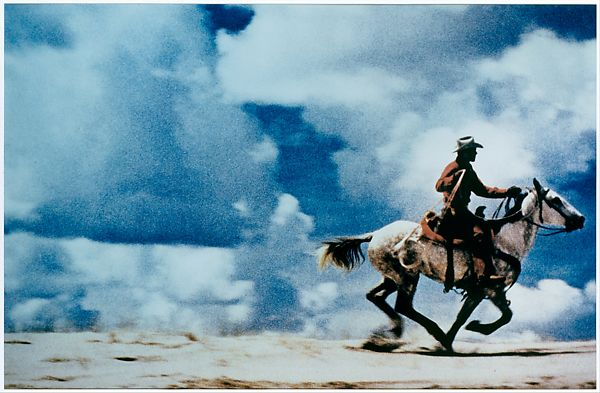 |
| Photo: The Metropolitan Museum of Art |
Aspiring painter Prince worked as a magazine clipper for Time-Life Inc. staff writers in the middle of the 1970s. The advertisements with their gleaming luxury goods and seemingly flawless models were all that were left at the end of the day. Intrigued and repulsed by these pervasive images, the artist started to rephotograph them using a variety of techniques (such as blurring, cropping, and enlarging) to emphasize their original artifice. In doing so, Prince called into question the images' appearance of naturalness and inevitableness and exposed them as hallucinatory fictions of society's desires.
A high point of the artist's ongoing critique of an American stereotype that is as timeless as the first explorers and as relevant as Ronald Reagan, who was then serving as outgoing president, is "Untitled (Cowboy)." The photograph of Prince is a replica of an advertisement that is a replica of a myth (the cowboy). This lone ranger, who keeps disappearing into the distance, serves as a convincing representation of the artist, who is constantly seeking the deeper meaning hidden beneath the surface.
"Untitled (Cowboy)," an artwork produced at the end of a decade that was dominated by materialism and illusion, is, in the broadest sense, a reflection on the persistence of a culture's preference for spectacle over lived experience.
8. Andreas Gursky, Chicago Board of Trade II
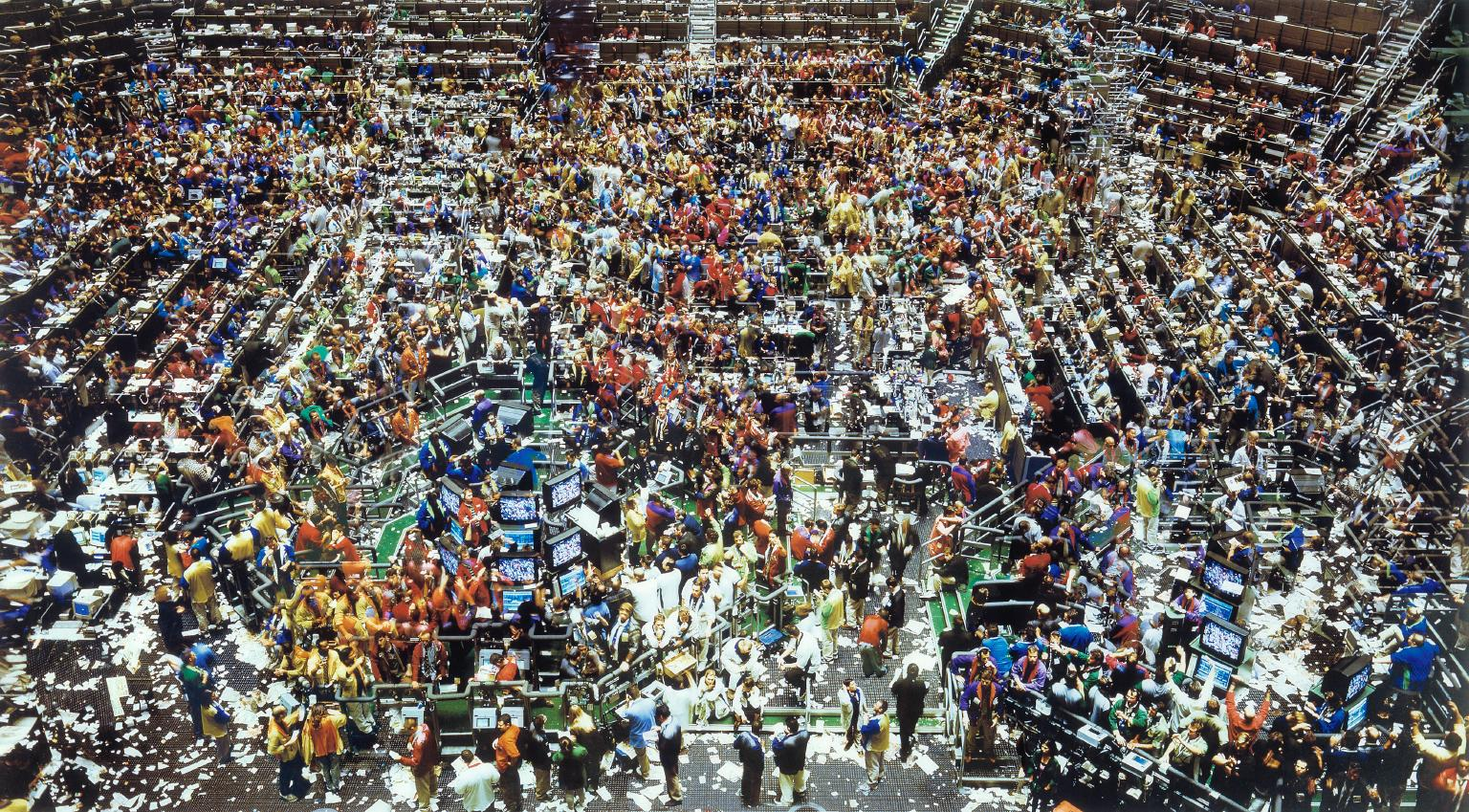 |
| Photo: Tate |
In Gursky's method, the subject is frequently photographed multiple times, and the resulting images are then scanned into a computer where Gursky can combine and manipulate them. His goal in using digital technology is to enhance the perception of something that already exists in the world rather than to produce fiction. In order to emphasize formal elements that will enhance the picture or, for example, to apply a picture concept that in real terms of perspective would be impossible to realize, he said, "Since 1992 I have consciously made use of the possibilities offered by electronic picture processing" (quoted in "... I generally let things develop slowly," Andreas Gursky: Fotografien 1994-1998, p.viii).
The architecture of the room is difficult to read in this instance due to the flat, all-over quality of the image and lack of a single perspective. The traders, monitor banks, and paper scraps all over the floor blend together to form a pattern reminiscent of abstract expressionist art. Gursky's image appears to portray the brash, exuberant, and unfathomable activity of the stock market as a global phenomenon rather than a straightforward representation of the trading floor as a physical location. In fact, this image is part of a collection Gursky took of global stock and commodity exchanges, such as the Chicago Mercantile Exchange, Singapore Simex, and Hong Kong Stock Exchange.
In 1997, he also created an earlier image of the Chicago Board of Trade. One of the far walls of the trading room is visible in the earlier photograph, which was taken from a lower angle and gives the impression that the activity on the trading floor is constrained. The crowded trading floor takes up the entire image in this version, which was created two years later. The colors have been digitally enhanced, which intensifies the decorative effect and makes it resemble stained glass or mosaic.
7. Andreas Gursky, 99 Cent II Diptychon
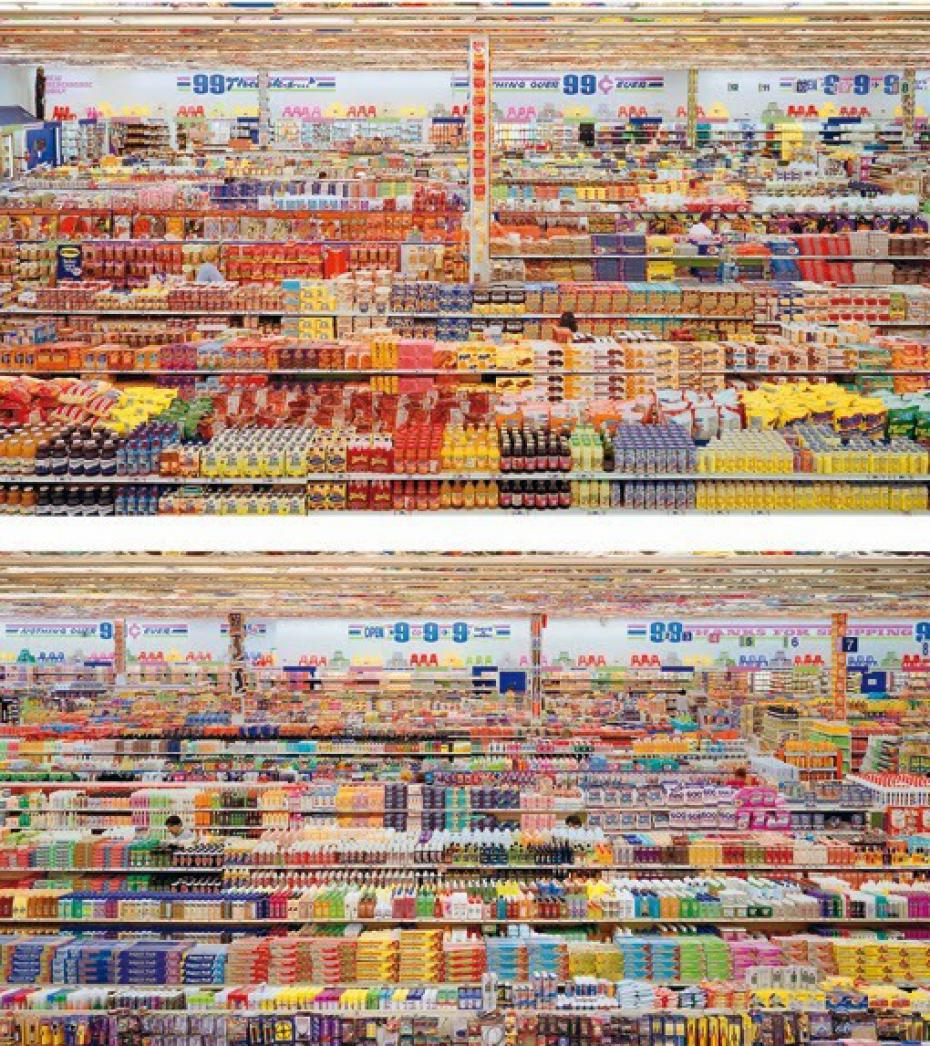 |
| Photo: Tate |
Because the piece is occasionally referred to as "99 cent.1999," it is assumed that Andreas Gursky originally created the two-part color photograph that is the artwork 99 Cent II Diptychon in 1999.
The colorful piece shows the interior of a supermarket with many aisles filled with merchandise. Digital editing reduces perspective in the work. The image is a chromogenic color print, also known as a c-print. It is a two-part piece of art, or a diptych. Six sets total were created and mounted on acrylic glass. The pictures measure 2.07 by 3.37 meters (6.8 ft 11.1 ft) in size.
When the piece was sold at Sotheby's for US$3.34 million on February 7, 2007, it rose to fame as the most expensive photograph in the world. A second print brought in $2.25 million at another New York auction in May 2006, and a third print brought in $2.48 million at a New York gallery in November 2006. As of 2011, these would rank fourth and sixth in terms of price for photographs sold. Untitled #96 from 1981 by Cindy Sherman sold for $3.89 million on May 12, 2011.
6. Jeff Wall, Dead Troops Talk
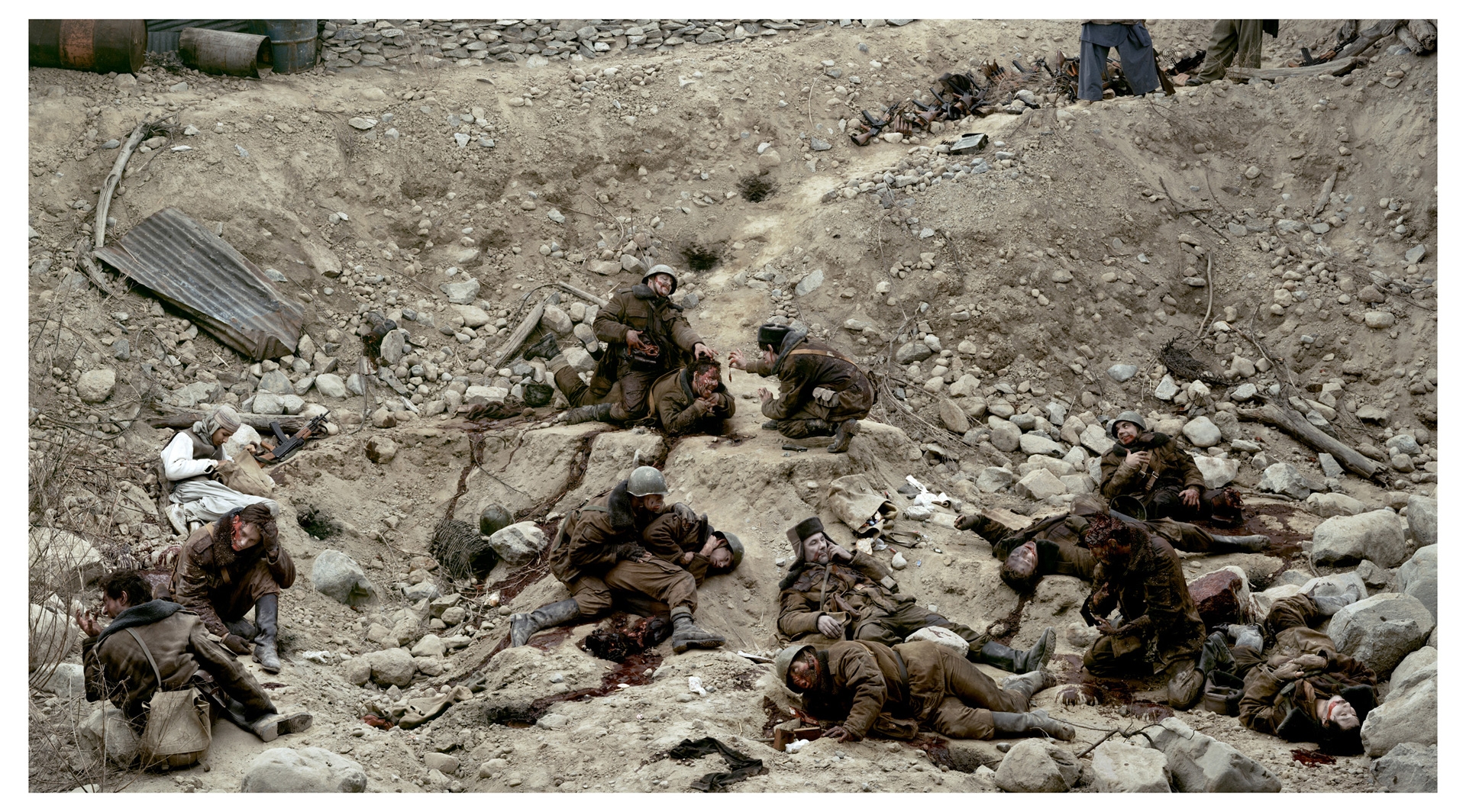 |
| Dead Troops Talk (a vision after an ambush of a Red Army Patrol, near Moqor, Afghanistan, winter 1986) by Jeff Wall |
Jeff Wall, one of the most important photographers of the past 30 years, produces elaborately staged transparencies that are displayed in light boxes. With the help of subtle conceptual techniques, juxtapositions, and references to art history, Wall's photographs offer a critique of contemporary life. In Dead Troops Talk, Wall captures a complex made-up scene that resembles both a war painting and a zombie horror movie still. The image, which was staged in various locations, shows a battlefield with soldiers coming back to life. The men react to their newfound transcendence in a variety of ways, from humor to confusion. The troops' apparent preoccupation with interpersonal relationships over the historical significance of their own actions is an odd paradox.
One of the most significant photographers to emerge in the last forty years is Jeff Wall, who is also arguably one of the most popular artists currently living and working in Canada. In Vancouver, where he began his career, there was a small but devoted group of conceptual artists. Wall is credited with extending the boundaries and range of contemporary photography. Wall's photographs, which are displayed in light boxes, evoke moments of strange resonance by fusing various conceptual techniques from modernist painting, cinema, and literature. Wall's subtle use of painting history to reflect on and enhance the diverse theoretical climate of the art world may be his most important contribution. His work contains critiques of the gaze, the nature of representation, and the market economy; the numerous subtextual layers entice the viewer to delve deeper.
5. Gilbert & George, To Her Majesty
 |
| Photo: Christie's |
Gilbert & George aimed to elevate everyday experience and dismantle the ideologies and pretensions of art history by presenting themselves as objects for contemplation in works like To Her Majesty. Since their time at St. Martin's in the late 1960s, when they rejected the overriding emphasis on formalism and materiality in art at the time, they have done this by pushing the boundaries of what is acceptable.
Gilbert and George have produced a realistic, "warts and all," portrayal of contemporary life that grapples with both its horrifying ugliness and fascinating beauty. The artists' depiction of an ancient culture of heavy drinking, like their earlier use of vintage vaudeville songs and pastoral imagery, both promotes an image of Britain and simultaneously criticizes its conventions, reflecting the norms of British society as bizarre extremes.
The adopted façade of perfectly tailored three-button suits and expressionless faces, which are notable for their unnervingly bland ordinaryness, further inverts this outsider's understanding of the general societal urge for conformity. Gilbert & George embody the idea that an artist's sacrifice and personal investment is a necessary condition of art. However, they have discovered that self-deprecating humor is the ideal foil for confrontation, allowing them to deflect the discomfort of public scrutiny. Gilbert & George see themselves as a living breathing sculpture that contains emotion and feels pain.
4. Cindy Sherman, Untitled 96
 |
| Photo: Cindy Sherman |
American photographer Cindy Sherman created Untitled #96 in color in 1981. It is recognized as a 12 image series called the Centerfold. The highest price ever paid for a photographic print was $3.89 million for a print that was auctioned on May 11, 2011, though the price has since been surpassed. At Christie's New York on May 8, 2012, another print sold for $2,882,500.
In the photo, the artist has portrayed a young adolescent girl with short blonde hair who is clutching a piece of newspaper while lying on a linoleum floor while wearing an orange sweater and a short skirt. Cindy Sherman provided a description of the composition: "I imagined a young child who, perhaps while helping her mother clean the kitchen, tore something from the paper and asked, "Are you lonely?" or "Do you want to be friends?" or "Do you want to go on a vacation?" She pulls this out while cleaning the floor and is contemplating it ".
The Art Institute of Chicago, the Museum Boijmans van Beuningen, and the Museum of Modern Art, all in New York, have prints of the photograph.
3. Richard Prince, Spiritual America
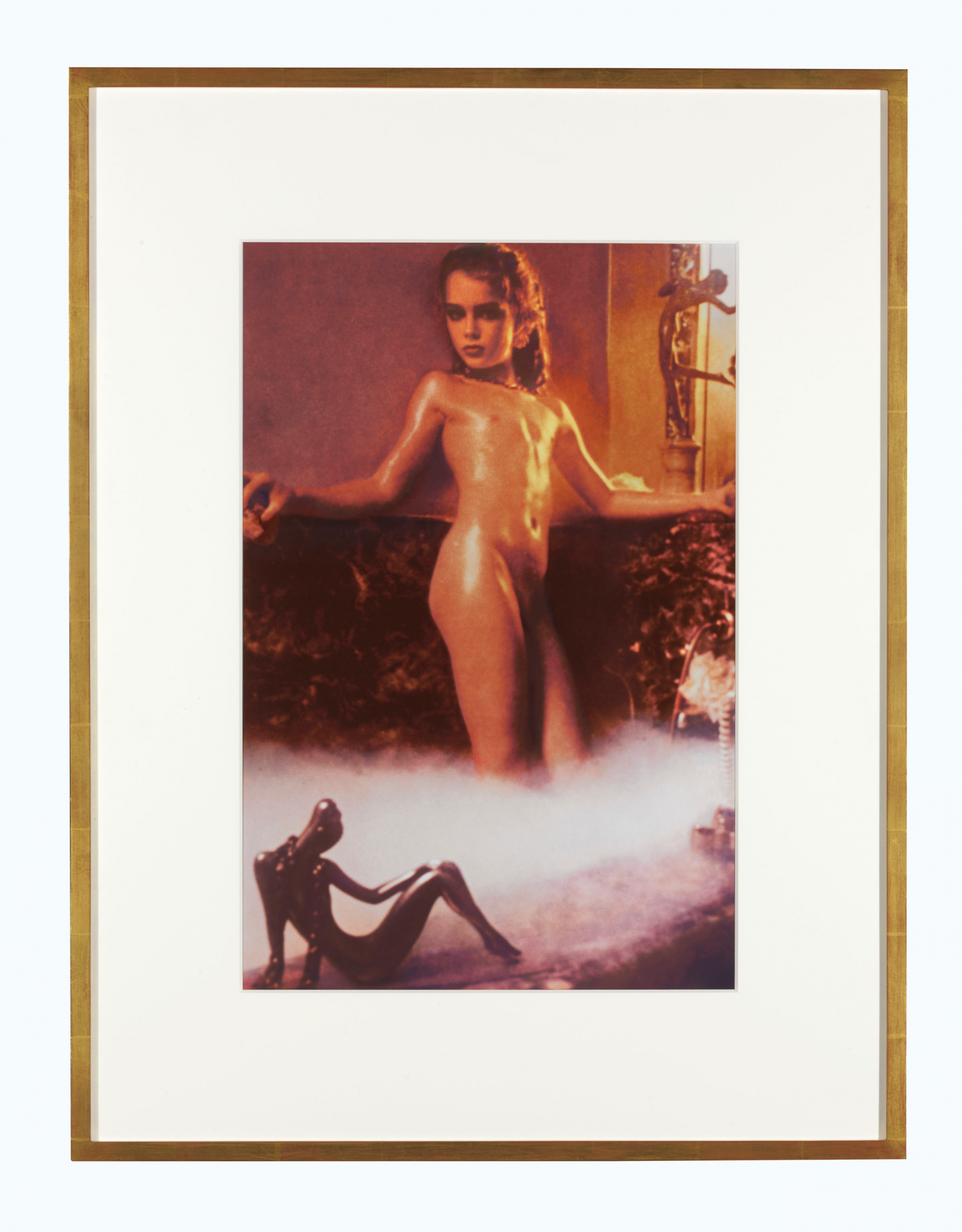 |
| Photo: Christie's |
We are confronted with a remarkably unsettling image in Prince's most notorious appropriation, as well as issues of authorship, ownership, and consent. This image of a young Brooke Shields, originally shot by commercial photographer Gary Gross in 1976, uncomfortably resembles child pornography. Shields, a 10-year-old girl, is seen standing in the middle of the image with her arms outstretched to reveal her bare body. Her gaze meets the viewer's with an unsettlingly seductive look. Her gleaming skin and the white smoke that rises to her knees reflect light from the window. Her undeveloped body and obvious youth are in stark contrast to her mature expression and seductive stance. It is without a doubt a highly sexualized and provocative image of a prepubescent girl.
The image is disturbing visually, and its history is also sketchy. Shields' mother had given her permission for the original image to be taken, and for $450 she sold Gross the right to publish it without restriction. Shields was a relatively unknown person in 1976. Shields and her mother sued Gross in 1983, the year of Prince's rephotograph, in an effort to have the image removed, but they were unsuccessful. The image was never used by the mainstream media in the coverage of this legal dispute, but Prince discovered it in an adult magazine (Little Women), reshot it, and displayed it in a gallery on Manhattan's Lower East Side. The exhibition became an elite event because guests were only allowed in by invitation. However, because this was the only image on display, visitors had to admit that they had come specifically to see this contentious piece, making them complicit in the exploitation of the young Shields.
Prince thus revealed not only the scandalous work, the questionable circumstances surrounding its creation, and the subject's consent, but also the general public's fascination with scandal. The exhibition's title, Spiritual America, was derived from an earlier source—an Alfred Stieglitz image of a gelded horse, which is frequently seen as a critique of American conservatism or repression.
2. Andreas Gursky, Rhein II
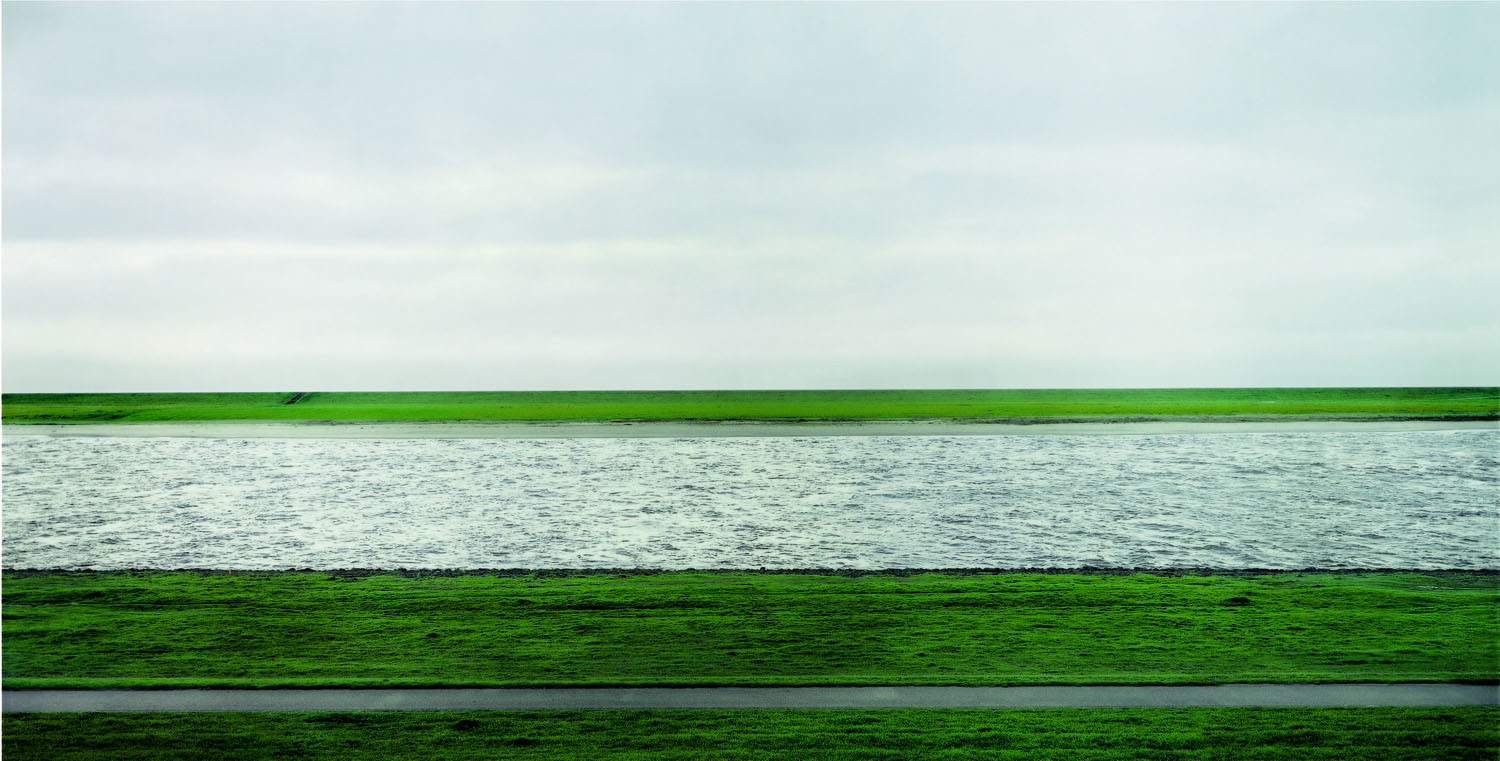 |
| Photo: Andrea Gursky |
The Rhine II exemplifies Gursky's tendency toward abstraction. Periodically throughout his career, he has created images that are more in line with the tradition of abstract art due to their formal and conceptual simplicity. A close-up of an industrial carpet in Untitled I, 1993, resembles a grey, monochrome painting. Brasilia, General Assembly I, 1994's grid-like ceiling has similarities to simple objects. The Rhine II places a similar emphasis on textures as these earlier pictures; the contrasts between the river's shimmering gloss, the clouds' smudged softness, the lush carpet of the verges, and the hard matte path give the picture a sensual feel.
The image was modified from an earlier one, The Rhine, 1996. The earlier piece features a more uniformly grey sky and a slightly higher, flatter vantage point. Both images have been "festooned by critic's invocations of Barnett Newman," as Peter Galassi, Chief Curator of Photography at the Museum of Modern Art, has noted (Peter Galassi, "Gursky's World," Andreas Gursky, p.41). The monochrome surface of his canvases was frequently broken up by straight lines or zips in contrasting colors in Newman's (1905–70) preferred vertical compositions. The paintings by Newman read like horizontal versions in Gursky's works.
1. Peter Lik, Phantom
 |
| Photo: Peter Lik |
Five of the seven photographs with the highest reported sales prices ever as of 2019 were sold at Christie's auction, one was sold by Sotheby's, and the most expensive one was sold...anonymously? The claim that Peter Lik's "Phantom," a monochrome version of the previously published print "Ghost," was the most expensive photograph ever made propelled it into the spotlight in December 2014. The previous record, which had been held by Andreas Gursky's Rhein II, which had sold for $4,338,500 through the auction house Christie's in November 2011, was shattered by this anonymous sale for a reported 6.5 million dollars.
A shaft of light and falling sand are visible inside the subterranean slot canyon in this black and white image of Arizona's upper Antelope Canyon. A well-known location that attracts a lot of photographers and which I frequently take my own photos of. Even though there is some debate surrounding the sale of this photograph and its anonymity, many still agree that it is the most expensive photograph ever sold.
The Scripps Pier in La Jolla, California was the subject of several famous prints by Peter Lik, including "Endless Summer," "Ocean Window," and "A Sky Full of Stars." Moonlit Dreams, Tree of Life, "A Morning in France," and several other works from Arizona's Antelope Canyon are also well-known pieces. Top Antelope Canyon prints include "Eternal Beauty," "Desire," and of course "Ghost," from which "Phantom" was derived in color.
What makes Lik's work so priceless? Other than the buyer merely falling in love with the piece and believing it to be worth what he paid for it, there doesn't seem to be any agreement or clear solution. Perhaps the closest thing to reasoning we can get is the strange, powerful ways in which art affects people. However, some critics contest this. David Hulme, an art consultant, told the Sydney Morning Herald that these prices "are very high and certainly, in terms of other successful photographic artists, seem somewhat bizarre."
In his article from December 10, 2014, Jonathan Jones of The Guardian expressed an even harsher point of view. "Peter Lik's hollow, cliched, and tasteless black and white shot of an Arizona canyon doesn't count as art and shows that it never will," one critic wrote.
Controversy around "Phantom"According to Peter Lik, an anonymous bidder paid a staggering $6.5 million for the photograph "Phantom" in December 2014. It would become the most expensive price ever paid for a picture. Ever. This assertion was met with skepticism on all sides. No one has come forward or been able to identify the anonymous bidder. Since then, articles have highlighted issues with his tactics, sales, and overall photographic imagery. Although "Phantom's" sale was the most recent instance of his credibility being questioned, it wasn't the first. The sales of "One," "Illusion," or "Phantom" are suspicious, which is why they aren't among the top 20 most expensive photographs ever sold. No evidence exists to support the existence of these sales. Photographer's claim that they sold an image is not evidence. Anyone could claim to have sold an image for more than $6 million. Why is it real? There is nothing unusual about "The Phantom" by Peter Lik. He claimed that as the Indian guide threw some dust into the air, he was lining up the shot. This is what gave him the impression that she was a ghost. This picture was to be a straightforward landscape. It was not his artistic vision for the picture. Not a single image of a straightforward landscape can be found on the list of most expensive photos. Even Charles O'Rear's Bliss, the image with the most views ever, didn't make the cut. Despite the fact that the photographer claimed to have received a large sum of money. Furthermore, Peter Lik's "Phantom" isn't even the original version of this picture. In actuality, "Phantom" is a black and white adaptation of "Ghost" by Peter Lik. "Ghost's" sales totaled $15,860. Compared to the black and white version, that is over 409 times less expensive. It doesn't make sense. Who would pay this much for a copy that is desaturated? |
 Top 10 Most Luxurious and Expensive Helicopters In The World Top 10 Most Luxurious and Expensive Helicopters In The World Helicopters are not unfamiliar to most of us, but some of them are specially made with high quality materials, advanced technology and durable for different ... |
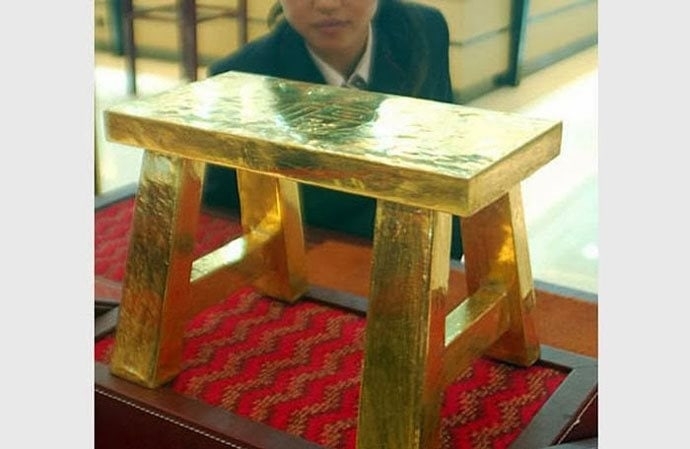 Top 10 Useless and Ridiculously Expensive Things In The World Top 10 Useless and Ridiculously Expensive Things In The World You get what you pay for but sometimes you pay too high for useless things. Check out top 10 useless and ridiculous expensive things in ... |
 Top 10 Most Expensive Mobilephones In the World 2021/2022 Top 10 Most Expensive Mobilephones In the World 2021/2022 Mobilephones are not just about use, it's also about owning a luxurious looking phone and showing it off to other people. Take a look at ... |
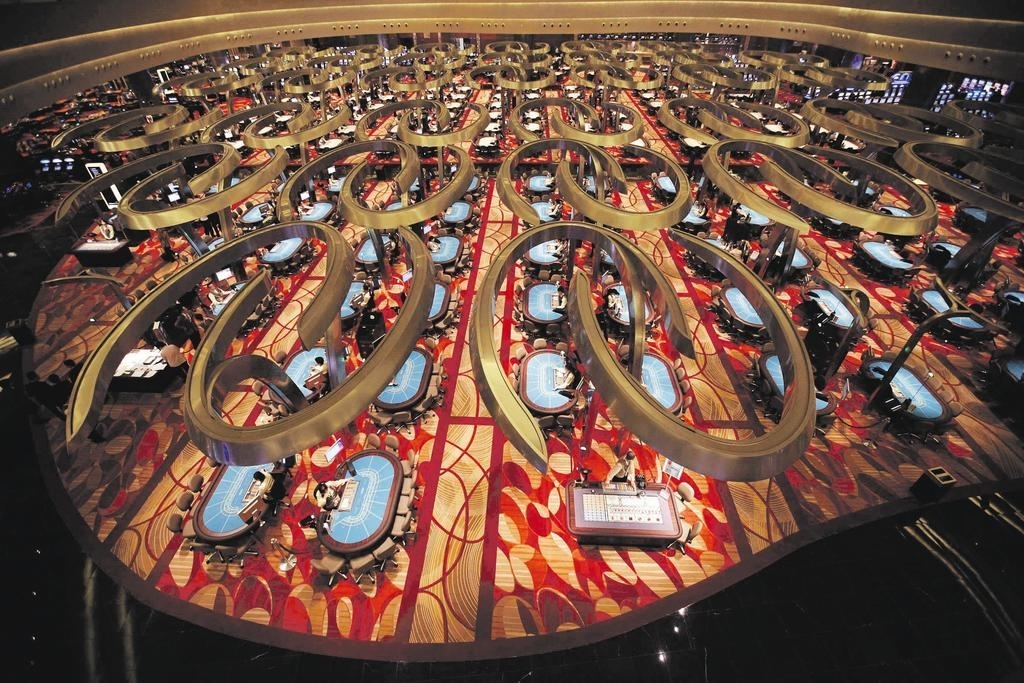 Top 10 Most Luxurious and Expensive Casinos In The World Top 10 Most Luxurious and Expensive Casinos In The World Curious to know what casinos are the most luxurious and expensive in the world? Read on to know the answer. |


























